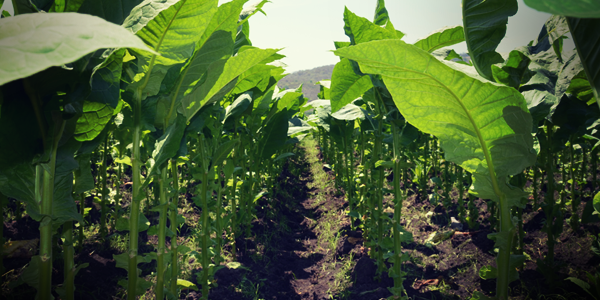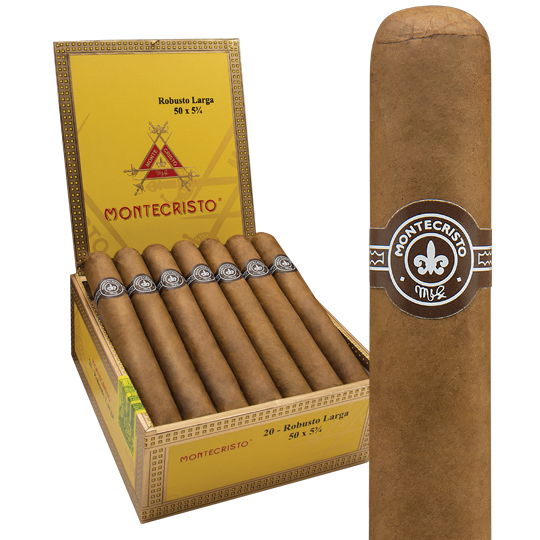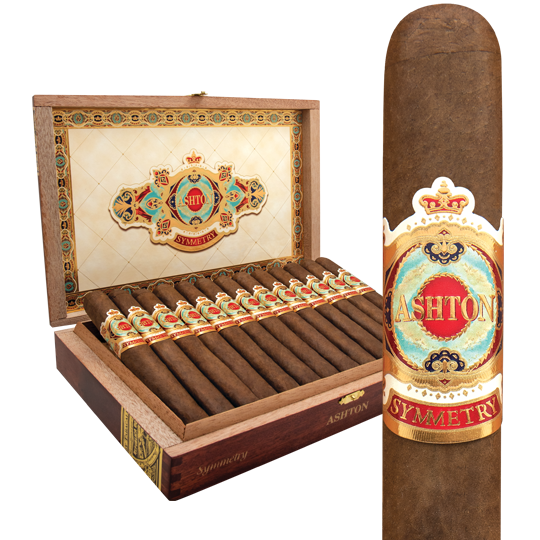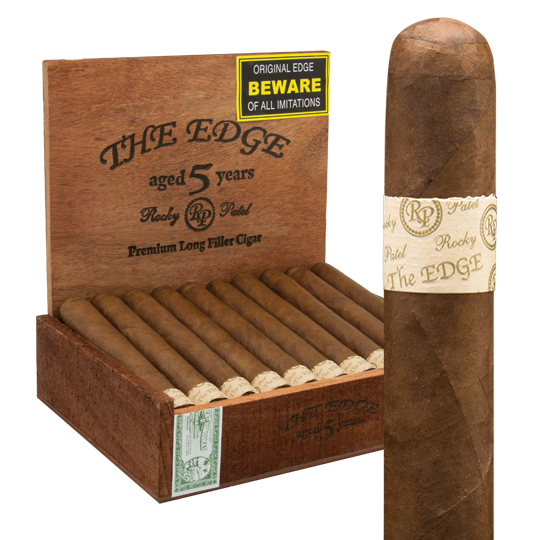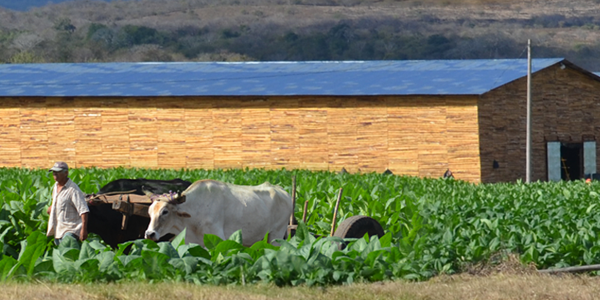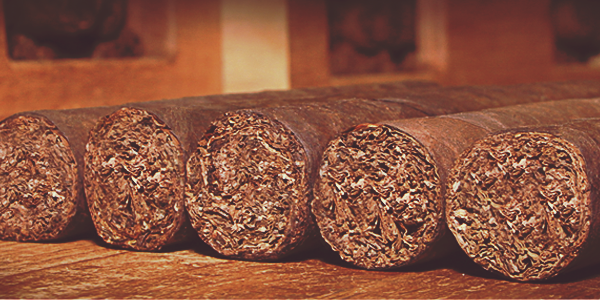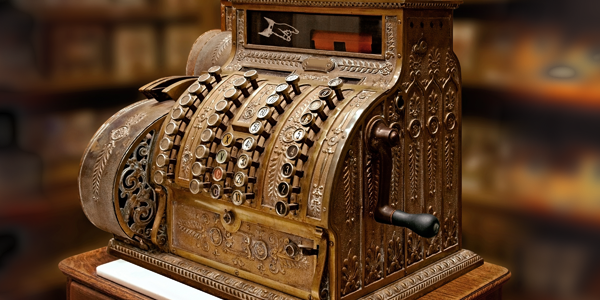How to Make Cigars: From Tobacco Plant to Cigar
Many hands touched the cigar you’re about to smoke. But the hands of a young, female virgin rolling your cigar on her thigh? Just a myth, I’m afraid. Tobacco growing and premium-cigar rolling are labor-intensive pursuits, the latter done on flat tables made of wood or metal. The tobacco leaves are resilient, but not immune to tearing if mishandled. So, after the leaves are grown, picked and cured, they make their way to the factory. That’s where the fun begins.
The Leaves
Making cigars from tobacco leaves is an intricate process. There are three types of tobacco leaf that make up a cigar. The wrapper is the most delicate and the most expensive. Think of a Fuente Fuente Opus X with its unique wrapper, grown under shade that is especially calibrated to create its distinct flavor profile. The filler is usually a blend of different leaves chosen for special characteristics they possess, like strength, spice, and flavor in general. In the case of premium cigars, we’re talking about long filler, or leaves that are one piece combined with others that are one piece. The binder does what its name implies, it corrals the leaves of the filler and compresses them so they burn properly. The wrapper, which can contribute up to 90 percent of the cigar’s flavor, goes around the binder to make a beautiful tube meant to go up in smoke.
Each type of leaf is sorted according to color, strength, texture, resiliency and size. The veins of the leaves are removed. Depending on what the intended final product is supposed to be, the tobacco can take three to four years of preparation. Before getting to the torcedor, or roller, a blend is put together for each cigar.
The Filler & Binder
The filler – called tripa in Spanish – and binder, or capote, are handled by workers called boncheros, or bunchers. They follow a recipe for the blend. Each blend has its own distinctive flavor, or should, and all the boncheros give the bunched leaves to the rollers, or torcedores, who are rolling that cigar. Each roller must get the same blend of tobacco leaves so that the cigars come out the same. The boncheros, who sometimes are also torcedores, take each bunch of leaves and place the filler leaves inside the binder. Many use a ‘Lieberman machine’ for this step. The machine has a rubber sheet onto which the leaves are placed, then, using levers to control the rolling, the leaves are formed into a reasonably tight tube. Highly experienced rollers tend to forgo the machine and do everything by hand, using one of three methods:
- Entubado: This tubing method calls for rolling each filler leaf into a scroll and then putting all the scrolls together inside the binder. The idea is to create a tight roll which will allow liberal air flow carrying more of the aromatics to your taste buds. This is considered the most sophisticated method of rolling and is not generally used in large-scale production. Arturo Fuente and My Father are excellent examples of premium brands that use this method exclusively.
- Accordion: The name is instructive. The outer sides of the filler leaves are folded inward, one at a time. All the leaves are then placed atop one another. This creates excellent air flow.
- Book Bunch: This is the fastest and most popular method used for premium cigars today. The filler leaves are stacked, then folded like a book (though it’s really more like a tortilla for a taco) and rolled in the binder.
The bound leaves, irrespective of the technique, are then placed into cigar molds and stacked, then weighted down and rotated for about 45 minutes so that the tubes will be evenly compressed.
The Wrapper
At the time the blending is happening, the leaves selected to become wrapper (capa in Spanish) – they are usually grown specially – also undergo stripping of the vein in the middle of each leaf. Once the vein is removed, there are two leaf halves remaining, a left and a right side. This is significant because the direction in which each side will be rolled is determined by whether it is a left or right side of the leaf. Take a look in your own humidor and see if you have cigars that were rolled in opposite directions. Ideally, every cigar in the same box will have been rolled in the same direction, but, well, stuff happens.
The stem of the wrapper constitutes about 30 percent of the weight of the leaf. The stems are often discarded, but sometimes used to create some other tobacco products. Once the stems are removed, the wrapper leaves are stacked in piles of about 30. Left and right are kept separate. The leaves in each pile are then sorted by size and color and, sensibly, different sized leaves will be used for different sized cigars. The wrapper leaves should be easy to tell from other types as they should be the smoothest, most consistent in color, and the most pliable.0
Putting on the wrapper leaf is the most technically demanding part of rolling a premium cigar. There are thousands of miniscule movements. The wrapper leaf must be kept taut without tearing it. The roll must be made at a precise angle with perfect tension. All this is done by the torcedor who wields a cutting tool called a chaveta, with its rounded, very sharp blade. The skill of the torcedor is perhaps most evident in creating the head of the cigar, which often involves cutting a small round (a cap) out of the wrapper leaf and gluing it on. Cuban cigars traditionally use what is called a ‘triple-cap’ that uses two caps and the ‘flag’ that is left at the end of the wrapper leaf.
Of course, as you know, there are two types of cigars. The Parejo, with straight sides and a slightly rounded head; and the Figurado, or shaped, cigar which is usually tapered on one (the head) or both ends. Let’s not even talk about box-pressed! Of these, Figurados are rolled by the most highly skilled torcedores. The final step in construction is to cut the foot of the cigar to the exact specification. A guillotina, or guillotine, is used for this.
Among the four most popular wrappers rolled these days is Connecticut. Traditional Connecticut wrappers, often called Connecticut Shade due to the growing process, are grown in the Connecticut River Valley and account for the primary tobacco contribution from the U.S. to cigars made today. Connecticut-seed wrappers are also successfully grown in places like Ecuador, and are commonly referred to as Ecuador Connecticut. In general, Connecticut wrappers are lighter in color and the nicotine level is low. The flavor is usually mild and creamy. Ashton, Macanudo Café, and Montecristo are leading brands that are crafted with traditional Connecticut wrappers.
Corojo is a very popular leaf for wrappers and is a bit darker in color. Corojo is much spicier and fuller in flavor, but it is also much tougher than the Connecticut Shade Grown variety. Check out Rocky Patel The Edge Corojo and Punch Signature for well-known examples.
The Habano wrapper is powerful in flavor and heavier on the nicotine. If furnishes lots of spice too. In many cases, when discussing Habano wrapper, we’re actually referring to Ecuador Habano, meaning a Cuban-seed wrapper that is grown Ecuador. Cuban-seed, or Habano, wrappers are also grown in other regions. Ashton Heritage, Ashton Symmetry, La Aroma de Cuba Edición Especial, and the original My Father blend, among others, are great cigars with Habano wrappers.
Maduro is a wrapper described more by process than type of tobacco. Maduro is the darkest in color of the four major wrapper types and involves longer aging that can add a touch of sweetness to the smoke. When you think Maduro, you’ll want to look closely at Padrón Cigars. They make many Maduro cigars. Padrón 80 Years is among our favorite. We also love the Ashton Aged Maduro in many different sizes.
When it comes to wrapper leaves, as well as binder and filler tobaccos, we can even drill down to a microscopic consideration of seed pedigrees, soil chemistry, and a number of other scientific facts about tobacco plants, but that’s another conversation entirely. Access to quality tobacco, proper fermentation, and the hands of a skilled roller are key ingredients in every great cigar.
What I like to do is smoke the same blend when it is available in differing wrapper varietals. For example, I’ll smoke a Padrón Maduro versus a Padrón Natural wrapper in the 1964 Anniversary blend. Doing so presents the opportunity to taste the nuances different wrapper types reveal. In this blend, I’m a fan of the Diplomatico shape. Let’s put a herf on the calendar. Whaddaya think? You bring the rum.

